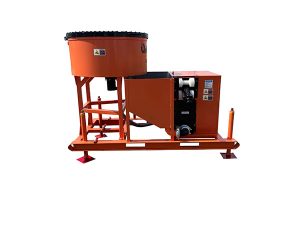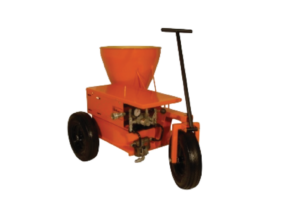It is important to use a pump for its intended purpose. If you use the wrong type of pump to move cement, you can easily damage the pump and ruin the cement mixture.
The appropriate pump to move cement will be a concrete pump or a cement pump. These pumps are specifically designed for cement. They can pump cement efficiently, making your work easier to complete.
How Concrete or Cement Pumps Work
Cement or concrete pumps work using the hydraulic principle and a valve system.
A cement pump contains a hopper, which holds and continuously churns the cement. By continuously churning the mixture, it prevents it from hardening. To start using the cement pump, pour the cement into the hopper directly from a mixing truck.
The pump will then use hydraulics to suck the liquid concrete into the valve system and out of the hopper. From there, the pump moves the liquid cement through the auxiliary hose until it reaches its desired destination.
Next, let’s look into how the hydraulics accomplish this pumping motion and move the liquid cement along its path.
How the Hydraulics Work
 It is common for twin-cylinder hydraulic concrete pumps to have two cylinders in parallel. Drive pistons move each cylinder back and forth. One cylinder moves forward while the other moves back and vice versa.
It is common for twin-cylinder hydraulic concrete pumps to have two cylinders in parallel. Drive pistons move each cylinder back and forth. One cylinder moves forward while the other moves back and vice versa.
The first of these cylinders is the material cylinder. It is responsible for pulling the liquid cement from the hopper. The second cylinder is the discharge cylinder. It is responsible for pushing the concrete out of the pump where you need it to go.
Each cylinder relies on the other to perform its function. They alternate pulling and pushing the liquid cement. This continuous back-and-forth motion occurs automatically thanks to the hydraulic flow created by the continuously flowing concrete. In addition to allowing back-and-forth movement and hydraulic flow, the continuous flow of concrete prevents the liquid cement from solidifying.
Examples of Pumps That Can Move Cement
 Remember that you should ensure that your chosen pump is capable of handling liquid cement. One popular option is the Quikspray Carrousel Pump. While this pump is commonly used for fireproofing, it is also useful for glass fiber surface bonding cement and other liquid cement applications.
Remember that you should ensure that your chosen pump is capable of handling liquid cement. One popular option is the Quikspray Carrousel Pump. While this pump is commonly used for fireproofing, it is also useful for glass fiber surface bonding cement and other liquid cement applications.
Quikspray also has several variations of its popular Carrousel Pump, including the Carrousel Heavy-Duty Grout Pump. Cementer or plaster coatings are among the many applications of this particular pump. The Quikspray 2” Carrousel Pump is yet another option. This is the highest-production pump manufactured by Quikspray and works well with self-consolidating concrete. You can also use the mini-pump for plaster cement or the 200 Grout Plant for self-consolidating concrete, among other options.
——————————-
If you want to pump cement, you need to use either a concrete or a cement pump. These pumps rely on hydraulics to pump the liquid cement through valves and then the connected hoses. Quikspray offers numerous options, and our team can help you choose the appropriate pump for your needs.
